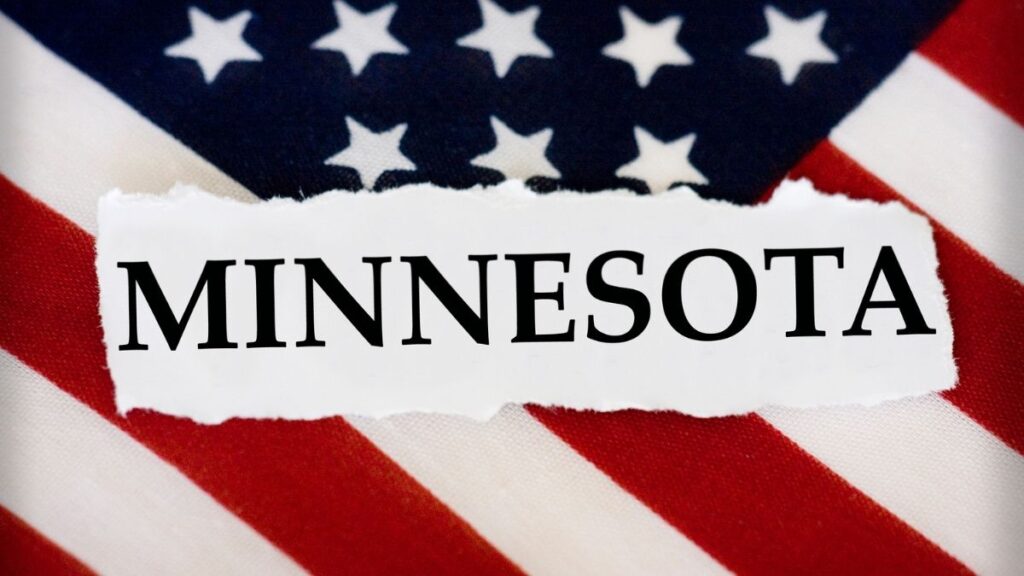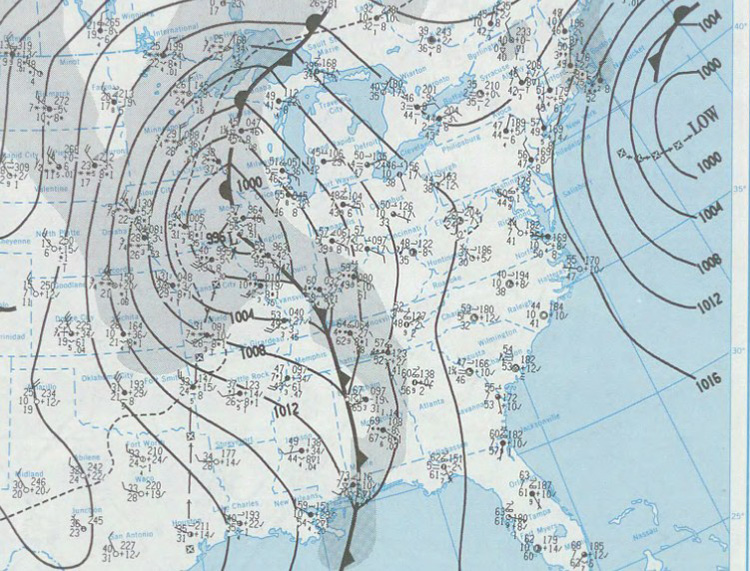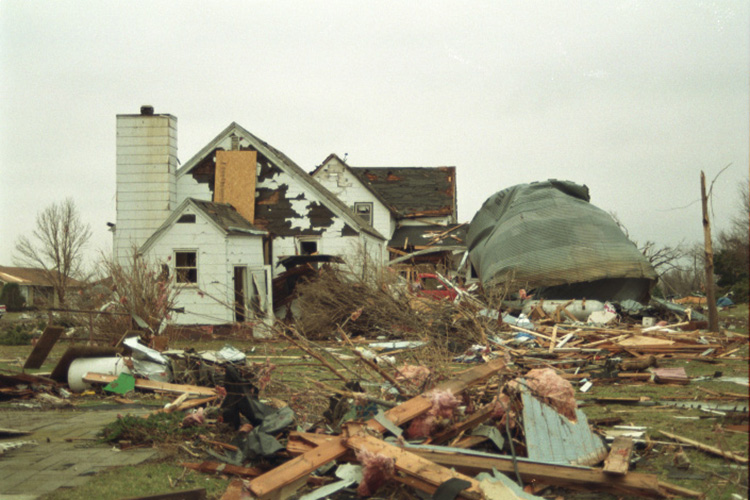
Minnesota preppers face many of the same threats as anyone else in America: civil collapse, EMP, natural disasters, etc. However, Minnesotans have unique challenges than preppers in other states. What makes sense for a prepper in Georgia may not make sense for a prepper in California. This applies to Minnesota as well.
NOTE: Do you live in Minnesota? You know your state, so let us know in the comments section how this article can be improved. What did we miss? What did we get right?
Minnesota Overview – Prepper’s Perspective
Minnesota is a great source of clean water! The state is known as the “Land of 10,000 Lakes.” Estimates of how many lakes in Minnesota exceed that number reasonably significantly, but some disagree about what lakes should be counted or not. The official number by the Minnesota Department of Natural Resources is 11,842 lakes located in the state. That is a lot of lakes!
With an average yearly rainfall of 29 inches, it is not surprising that the state has many lakes. However, that is nothing compared to the state’s 47 inches of annual snowfall. The end result is that most residents of Minnesota get their water from wells that tap into Minnesota’s oversupplied aquifers; 25% of the population gets their water from community water systems that rely on surface water; 52% get water from public water systems that rely on wells; and 23% get water from private wells. People living in Minneapolis, St. Paul, and St. Cloud get their water from the Mississippi River.
Minnesota is also a bread basket when it isn’t covered in snow. The state ranks in the top ten for producing commodities like sugar beets, sweet corn, oats, wild rice, soybeans, and green peas. Soybeans, corn, and wheat are part of Minnesota’s top exports. Yet, for those bugging out there are plenty of hunting, fishing, and trapping opportunities in Minnesotas nearly 12,000 lakes. Learning how to farm, fish, and trap are the three best ways to capitalize on Minnesota’s natural bounty.
Climate Change Destination
It’s important to note, particularly if you’re a climate change prepper, that Minnesota is becoming a go-to destination as a place to escape the effects of climate change. People are moving to Duluth for its climate safe haven status. One new resident moving from California stated:
“The air smells cleaner. The water is some of the best water in the world. It’s just very clean, it’s pristine, it’s beautiful,” 38-year-old Jenkins said, speaking to AFP from the restaurant he bought and renovated.
https://phys.org/news/2023-05-frigid-city-haven-climate-era.html
Minnesota Natural Disasters
Minnesota declared 63 major disasters between 1953 and 2019, floods and severe storms being the most frequent. One of the major floods that hit Minnesota is The Flood of April 1965. The flood resulted in damage across 5 states, destroying 11,000 homes, injuring 700 people, and leading to the death of 15 deaths.
Other natural disasters that occur in Minnesota are tornadoes, winter storms, wildfires, power outages, heat waves and droughts, earthquakes, and landslides. However, the most frequent natural disaster is high levels of snow and severe tornadoes. Provided you have your bases covered in those two departments, you should be covered for most disasters in Minnesota.
1) Armistice Day Blizzard (1940) – One of the largest blizzards to ever rock Minnesota. A combination of 40mph winds, low temperatures, and upwards of 26” of snowfall made this storm to be one to remember. While this is not the most common snowstorm in Minnesota, each winter brings with it the possibility of a repeat of the Armistice Day Blizzard.
2) 1965 Tornado Outbreak – A duo of F4 tornadoes hit on May 6, 1965 and wreaked havoc across the state in one of the most deadly tornado outbreaks the nation had seen to date. Three people were killed and 175 were injured after the first touched down. The second twister resulted in six deaths and 158 injured. A total of $14.5 million in damages took place in a very short span of time.
3) 1991 Halloween Blizzard – In more modern times, blizzards have not been the direct result of deaths, but still cause a fair amount of chaos in the lives of Minnesota residents. In 1991, starting on Halloween, the three days’ worth of snow led to a record-breaking snowfall in Minnesota. Over 400 car accidents were caused by this blizzard, over 80,000 homes lost power, and economic losses were estimated at $11.7 million.

4) Comfrey-St. Peter Tornado Outbreak (1998) – In 1965 two huge tornados caused severe death and damage. However, in 1998 a huge number of tornados – 14 to be exact- upended the state just as badly, but with far fewer deaths and injuries thanks to matured warning systems. In this tornado outbreak, two people were killed, 21 were injured, and the damage was severe.

Prepping Strategies
Bugging In
Build A Winter Survival Kit
If you are going to bug in during a SHTF scenario in Minnesota, you will need to be prepared to survive a severe winter. You need to be prepared to heat your home for an extended period without electricity and weather any supply chain upheavals that will happen. Keeping extra essential medication, baby formula, and other niche goods that will be difficult to source during a massive winter storm is crucial to survival.
Begin preparing today for the next SHTF scenario by establishing a 90-day supply of all the hard-to-find but essential items you will need the next time the march of society comes to a grinding halt. Buying bulk survival food is one way to get a head start on that food security as is starting or expanding a food pantry.
Survival Starts in Spring
When SHTF you don’t want to be caught relying on anyone other than yourself. This is especially true in a Minnesota winter. Making it through various disasters is not that difficult, but surviving a long, hard Minnesota winter is not. It takes preparation, determination, and perseverance at the highest level. Therefore, as the snow breaks every year, you need to prepare immediately for the next winter. Your daily routine should include sourcing firewood, growing gardens, fishing, and hunting. Getting food and fuel put away so that you can survive the next winter is critical.
Learn How to Can
If you are going to bug in during when SHTF in Minnesota, and you should, you will need to be able to feed yourself for an extended period. Canning is one of the most proven ways to store food without electricity for an extended time. Canning vegetables, fish, and meat is relatively easy, requires very few supplies, and can store food nearly indefinitely. While summers yield Minnesota a bread basket, winters are cruel.
- Agriculture, United States Department of (Author)
- English (Publication Language)
- 197 Pages - 03/05/2017 (Publication Date) - Prepper Press (Publisher)
Gathering food may not be possible, depending on when you have to bug in. Therefore you must begin canning soon and keep it up, cycling through old stores once you have enough to feed yourself for a year or more.
Bugging Out
One of the most important pieces of equipment for any prepper planning to bug out is to have decent maps of their state. Having an identified bug out location is crucial. All preppers in any state should begin their bug out plans with a paper map of their state. Nothing is better for all-purpose use than the DeLorme Atlas and Gazetteer.
- Back roads, dirt roads and trails
- Elevation contours
- Remote lakes and streams
- Boat ramps
- Public land for recreation
Learn Your Mushrooms
Minnesota’s forests, lakes, rivers, and streams can be incredibly bountiful if you know how to take advantage of them while bugging out. One of the most overlooked but delicious and easy-to-harvest food supplies is the various types of mushrooms that grow in the state. However, you don’t want to eat any mushrooms you find. Instead, you must be very selective. Eating the wrong mushroom could quickly render you sick or take your life.
Trapping Is Key
During your bug-out, you will need to continually be sourcing food. Setting traps at night before bed can be an excellent way to get much-needed protein. However, animals don’t willingly fall into traps. You will need to spend significant time developing your knowledge and understanding of the natural world to know when and where to place a snare, figure four, leghold, or conibear trap. Getting a mentor or taking a course in trapping can be very helpful in developing the needed skills and understanding to be a successful trapper during your bug-out.
Avoid the Ice
During the height of a Minnesota winter, it is typical to see people ice fishing and driving across lakes and rivers. However, during a bug-out scenario, you want to avoid them at all costs. If you find a patch of thin ice caused by underwater currents, springs, or early thaw and fall in, there will be no one to help you. Not only will all municipal services be shut down, but the commotion will call undue attention to yourself. This could result in entanglements with bad actors that make your bug out complicated, if not end it altogether.
Further Reading for Minnesota Preppers
Minnesota Permaculture – Facebook group to figuring out how to live off the grid even through a Minnesota winter.
Central Minnesota Preppers – A Facebook group focuses on gardening, prepping, and getting ready for the next storm.
Be Ready Minnesota – Government website that explains what you should be doing for floods, tornados, and winter storms.
Minnesota Department of Health – Disaster and emergency preparedness resources for training and information.
North House Courses – North House is a traditional folk school that teaches carving, framing, and other skills to students.
Minnesota Primitive Skills School – School in Minnesota that offers courses in survival and skills workshops.


